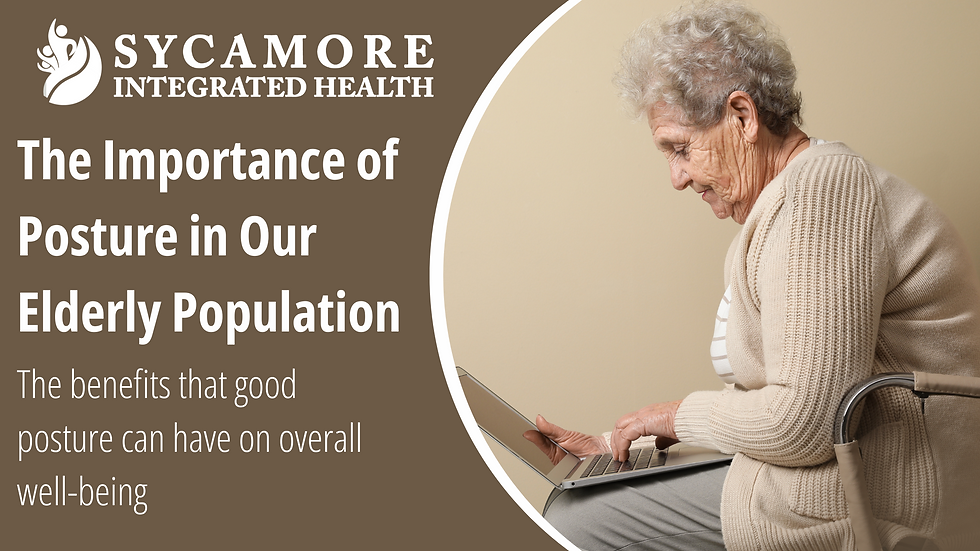Why You Should Consider Using A Foam Roller
- Sycamore Integrated Health

- Aug 4, 2022
- 2 min read
Updated: Dec 12, 2024
By: Dr. Sean Miller

Perhaps you have seen those cylindrical chunks of foam sitting in the corner of your gym and looking at them with some confusion. You may have even seen someone utilizing that tool in various manners and think to yourself, “Is that really necessary?”. Foam rolling offers so many potential benefits to your overall health and well-being that by the end of this, you will be CONVINCED it needs to be part of your workout routine.
What is Foam Rolling?
Foam rolling is a self-myofascial release (SMR) technique. Research has shown that utilizing this device has a similar effect as getting a sports massage. While working out, you may have experienced physical trauma, potential scarring. or inflammation, causing your fascia to lose some of its elasticity. When this occurs, the fascia surrounding your muscles becomes tight and restricted, leading to pain.
Benefits:
Increased circulation, leading for faster recovery post-workout
Improved range of motion
Optimize muscle-length balance across joints to reduce injury
Breaking up scar tissue that can occur during your training
Relieving pain, soreness, and stiffness
Increase flexibility which leads to lengthened muscles, allowing you to strengthen your muscle throughout a greater range of motion.
Types of Foam Rollers:
Textured rollers have ridges and knobs on the surface. They are used to work deeper into muscles, and work out knots (trigger points) and tension.
Smooth rollers are known for having a smooth, dense foam surface. They are best for people new to foam rolling. This option is less expensive and less “intense” than the textured option.
Foam-covered massage sticks can be used to deeply massage your legs or upper back.
Is it Safe?
Foam rolling is generally considered safe to do if you experience muscle tightness or regularly exercise.
Avoid foam rolling if you have a serious injury (i.e muscle tear), unless your doctor or a physical therapist has cleared you first
Also avoid rolling over small joints like your knees, elbows, and ankles.
Roll muscle groups separately (i.e 1st your calves, then your quads) to reduce stress on the knee.
How Do I Get Started?
There are numerous sources online to view beginner foam rolling techniques. However, seeking out the guidance of a physical therapist can help you create a meaningful, individualized plan.
Start with light pressure and build up as you get used to foam rolling.
To adjust pressure, reduce the amount of body weight you’re putting onto the roller.
Slowly roll sore, achy areas for 10 seconds to start, then work up to 30 to 60 seconds at a time.
Drink plenty of water (like you would do after a massage) after foam rolling to help with recovery.
Take Away:
Foam rolling can be an effective way to reduce muscle tension before starting your workout and after you finish up. If you stay consistent, you will begin to feel less sore and experience a reduction in your usual aches and pains. To note, it is important to consult your doctor or physical therapist prior to using any new tool with your daily routine. So get after it and start feeling better both in and out of the gym!




Comments